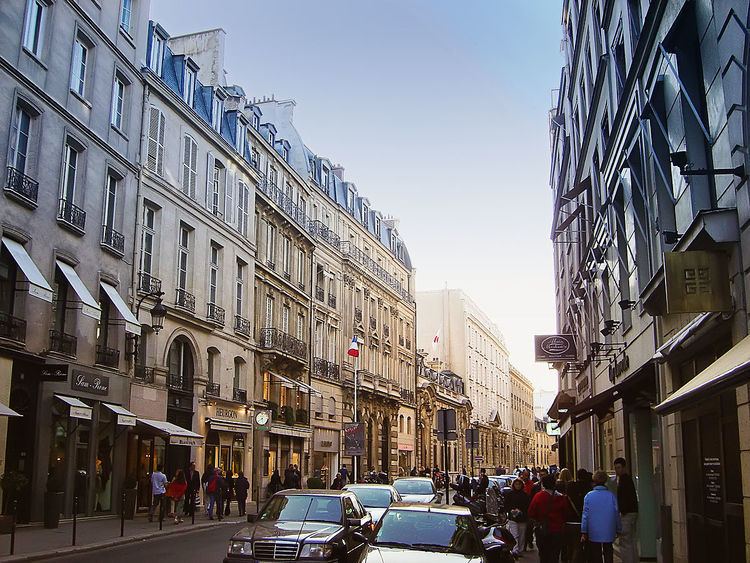Length 2,070 m (6,790 ft) Denomination December 10, 1847 | From 15-19 rue Royale Inaugurated 10 December 1847 | |
 | ||
Width 14.50 m (47.6 ft) between rue Royale and rue La Boétie; 13.80 m between rue La Boétie and avenue de Wagram Similar Place Vendôme, town hall of Paris 18th arrondissement, Étienne Marcel, Palais Royal – Musée du, Porte de Bagnolet | ||
The rue du Faubourg Saint-Honoré is a street in Paris, France. Relatively narrow and nondescript, especially in comparison to the nearby avenue des Champs Élysées, it is cited as being one of the most luxurious and fashionable streets in the world thanks to the presence of virtually every major global fashion house, the Élysée Palace (official residence of the President), the Hôtel de Pontalba (residence of the United States Ambassador to France), the residence of the Canadian Ambassador to France, the Embassy of the United Kingdom, and numerous art galleries.
Contents
- Map of Rue du Faubourg Saint HonorC3A9 75008 Paris France
- History
- Contemporary Paris
- Notable buildings
- Mtro station
- References
Map of Rue du Faubourg Saint-Honor%C3%A9, 75008 Paris, France
The rue Saint-Honoré, of which the rue du Faubourg Saint-Honoré is now an extension, began as a road extending west from the northern edge of the Louvre Palace. Saint Honoré, Honorius of Amiens, is the French patron saint of bakers.
History
Until the 18th century, a few villages were dispersed in a rural area that extended west of the Louvre. The main street (a dirt road) of Roule, one of the villages, became rue Neuve-Saint-Honoré; it was lined and surrounded by a few mansions. The passage was upgraded in the 12th century to accommodate the increasing traffic from Paris's central market, Les Halles, to the outer villages. (The market was moved from the center of Paris in 1971 to the suburb Rungis.)
The road extended to the edge or gate of Paris. The passage was renamed rue du Faubourg Saint-Honoré when the village became an official suburb of Paris; (foris burgem in Latin means "outside the city."). Originally, the passage extended to the Forêt de Rouvray ("oak forest"), which covered a vast area west of Paris. Remnants of it are the Bois de Boulogne, as well as the 5 100 ha Forêt Domaniale de la Londe-Rouvray in Normandy.
The rue du Faubourg Saint-Honoré was incorporated into Paris's city limits in 1860.
Contemporary Paris
The newest styles in Paris can come from any number of arrondissements but, depending on tradition, the reliable gauge of style in Paris and high style can be found along 10 blocks of rue Saint-Honoré, from rue Cambon to rue des Pyramides.
Notable buildings
Métro station
The rue du Faubourg Saint-Honoré is:
It is served by the 2, 8, 9, 12, and 14 lines.
